Is your home starting to feel more like a jumble sale than a peaceful haven? Don’t worry, you’re not alone. Clutter has a sneaky way of creeping up on us, turning our living spaces into stress-inducing chaos. But here’s the good news: decluttering doesn’t have to be a mammoth task. With a few simple tricks up your sleeve, you can transform your home into a calm, organised space that actually brings you joy. I’ve rounded up 36 easy-peasy decluttering tips that anyone can use, no matter how messy things have gotten. These aren’t about turning your home into a minimalist showroom – they’re practical, doable ideas to help you create a space that works for you. Ready to wave goodbye to clutter and hello to calm? Let’s crack on!
Start with the Easiest Room
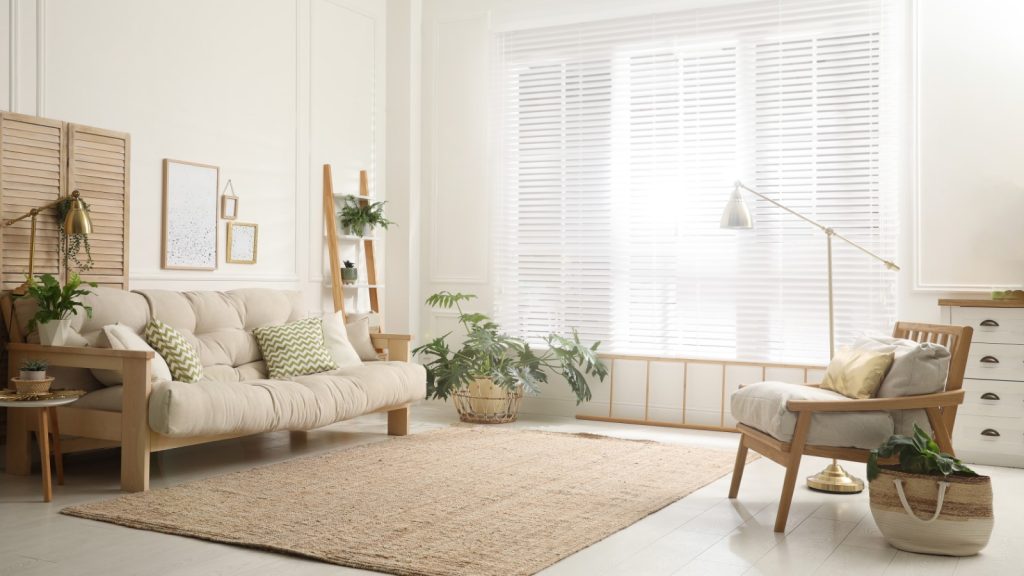
Begin your decluttering journey with the room that needs the least work. This quick win will boost your motivation and build momentum for tackling tougher spaces. Choose a guest room or a less-used area of your home. Spend just 15 minutes tidying and organising this space, and bask in the satisfaction of a job well done. Take a ‘before’ and ‘after’ photo to visually appreciate your progress and keep yourself motivated.
Use the Four-Box Method

Grab four boxes and label them: Keep, Donate, Store, and Bin. As you go through your items, place each one in the appropriate box. This method forces you to make a decision about each item, preventing you from just shuffling things around. Be honest with yourself about what you really need and use. Set a timer for 20 minutes and see how much you can sort through – you’ll be surprised at how quickly you can make decisions when you’re focused.
Try the 90/90 Rule

For each item, ask yourself if you’ve used it in the last 90 days or if you’ll use it in the next 90. If the answer is no to both, it’s time to let it go. This rule is particularly useful for clothes and kitchen gadgets. It helps you be realistic about what you actually use and need. For seasonal items, adjust the timeframe to 12 months instead of 90 days.
Tackle One Drawer at a Time
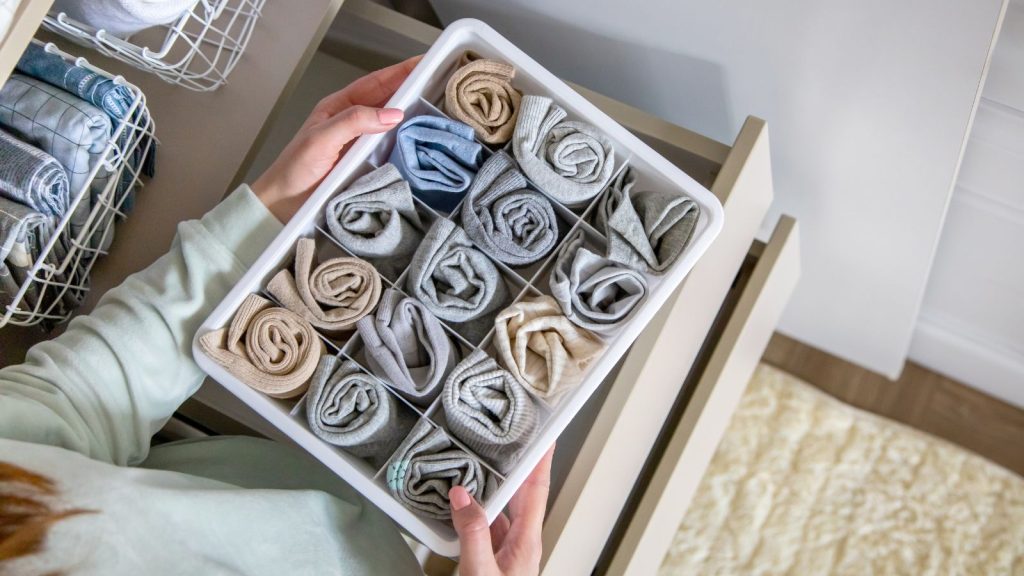
Don’t overwhelm yourself by trying to declutter an entire room at once. Start with a single drawer. Empty it completely, clean it, and only put back items you genuinely need and use. This bite-sized approach makes decluttering feel manageable and gives you a sense of progress. Use drawer dividers or small boxes to keep the drawer organised once you’ve decluttered it.
Create a Donation Station

Designate a specific spot in your home for items to be donated. This could be a box in the corner of your bedroom or a bag in the hallway cupboard. Whenever you come across something you no longer need, pop it straight in the donation station. When it’s full, take it to a charity shop. Keep a list of local charities and their donation needs handy to make the process even smoother.
Implement the One In, One Out Rule

For every new item you bring into your home, remove one similar item. Bought a new jumper? Time to donate an old one. This rule helps maintain the balance in your home and prevents clutter from building up again. It’s especially useful for clothing, books, and kitchen items. Consider extending this rule to ‘one in, two out’ if you’re really serious about reducing clutter.
Use the Hanger Trick

Turn all your clothes hangers backwards. After you wear an item, return it to the wardrobe with the hanger facing the correct way. After six months, you’ll clearly see which clothes you actually wear. Donate or sell the items on backwards hangers. This visual trick makes it easy to identify your least-worn clothes. For seasonal items, do this trick twice a year – once for summer clothes and once for winter.
Sort Through Paper Clutter Daily
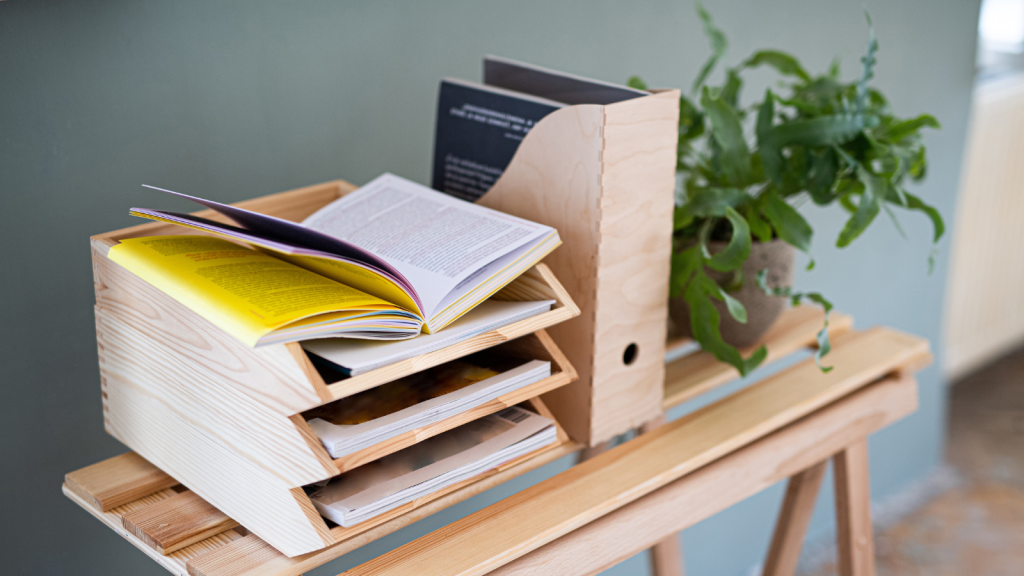
Set aside five minutes each day to sort through mail and papers. Recycle junk mail immediately, file important documents, and action any bills or correspondence right away. This daily habit prevents paper from piling up and becoming overwhelming. Keep a shredder handy for sensitive documents. Consider going paperless for bills and statements to reduce incoming paper clutter.
Declutter Your Digital Space

Don’t forget about digital clutter! Delete unused apps, unsubscribe from email newsletters you don’t read, and organise your computer files. A tidy digital space can be just as calming as a tidy physical space. Set aside time each week to clear out your downloads folder and empty your recycle bin. Use a digital organising tool like Evernote or Google Drive to keep your files structured and easily accessible.
Use the 20/20 Rule
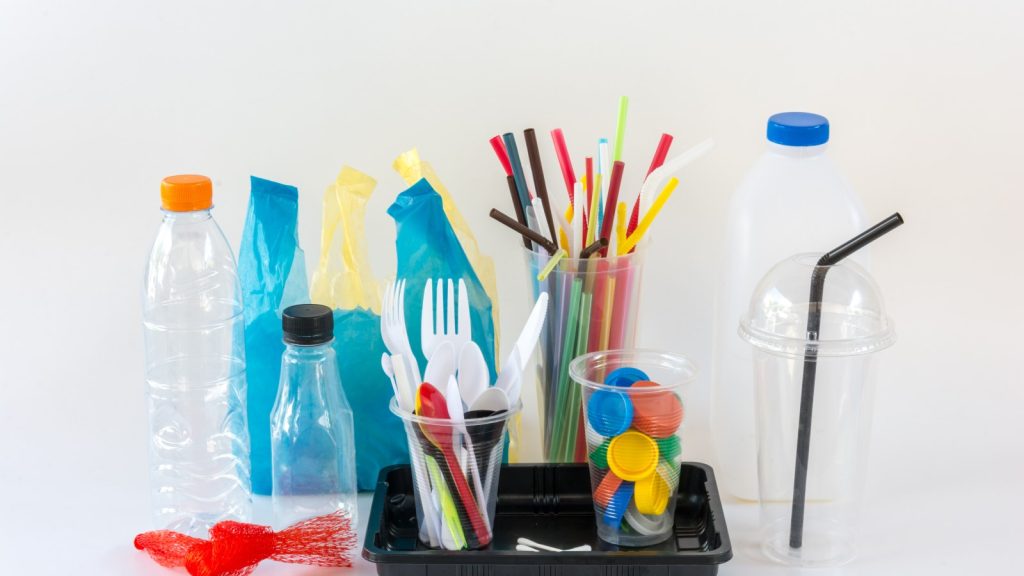
If you can replace an item within 20 minutes for under £20, consider letting it go. This rule helps you part with those “just in case” items that often contribute to clutter. It’s particularly useful for kitchen gadgets, tools, and miscellaneous household items. Keep a list of items you’ve decluttered using this rule – if you find you need to rebuy something, you can reassess the rule’s effectiveness for your lifestyle.
Create Zones in Your Home
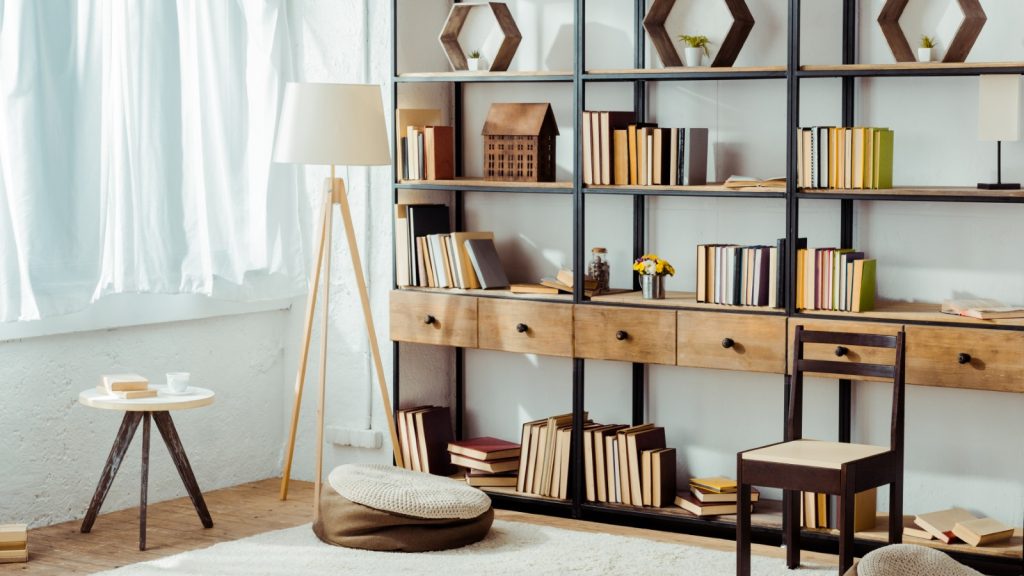
Assign specific activities to different areas of your home. Have a reading nook, a crafting corner, or a dedicated work space. This zoning helps keep items where they belong and makes tidying up easier. It also helps you see when you have too many items for a particular activity. Use labels or colour-coding to make these zones clear to everyone in the household.
Use Clear Storage Containers
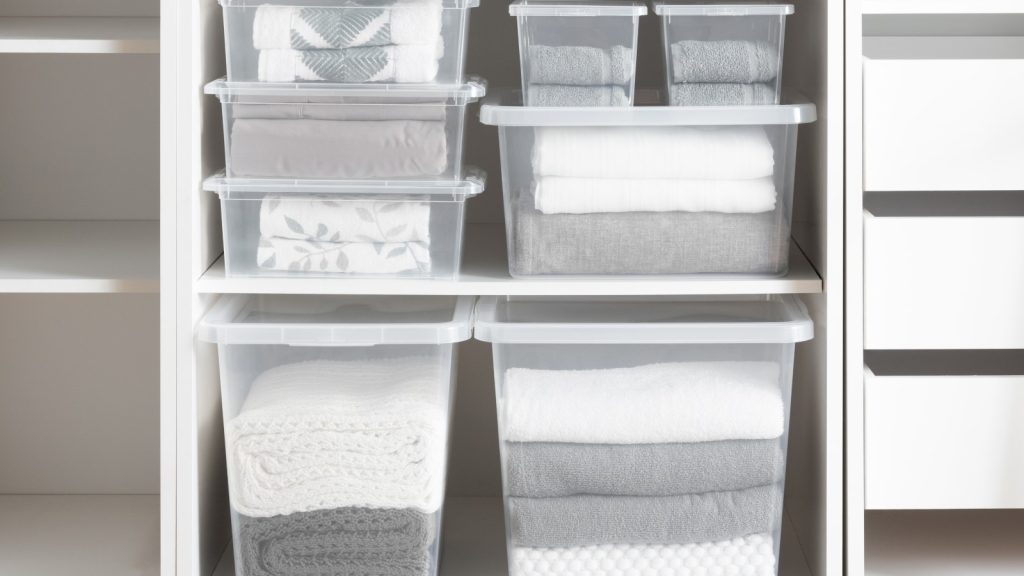
Opt for clear storage boxes so you can see what’s inside without opening them. This saves time when looking for items and prevents you from forgetting what you’ve stored. Label the containers for even easier identification. Clear containers work well for seasonal decorations, craft supplies, and stored clothing. Consider using vacuum-sealed bags inside clear containers for bulky items like winter coats or duvets.
Try the KonMari Folding Method

Learn Marie Kondo’s vertical folding technique. It allows you to see all your clothes at once and keeps drawers tidy. This method works for t-shirts, jumpers, and even socks. Once you get the hang of it, it’s quicker than traditional folding and makes choosing outfits easier. Create a folding station with a flat surface to make the process more efficient.
Use Vacuum Storage Bags
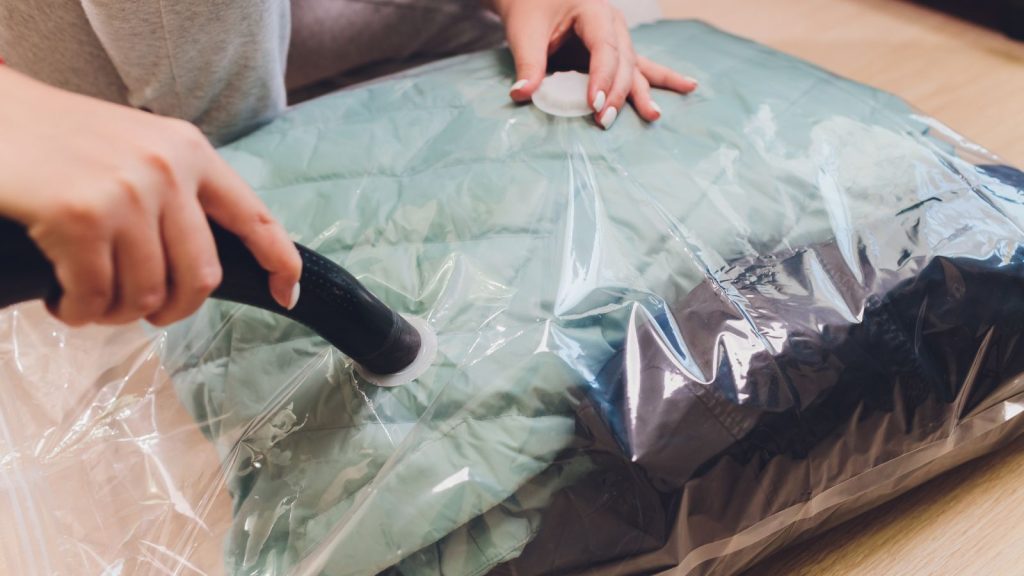
These bags are brilliant for storing bulky items like duvets, winter coats, and extra bedding. They compress items to a fraction of their original size, freeing up valuable storage space. They’re also great for protecting stored items from dust and moisture. Label each bag with its contents and the date it was packed to keep track of long-term storage items.
Declutter Your Fridge

Don’t neglect your fridge when decluttering. Throw out expired foods, clean the shelves, and organise items by category. Use clear containers to group similar items together. A tidy fridge makes meal planning easier and reduces food waste. Implement a ‘first in, first out’ system to ensure older items get used before they expire.
Create a ‘Maybe’ Box
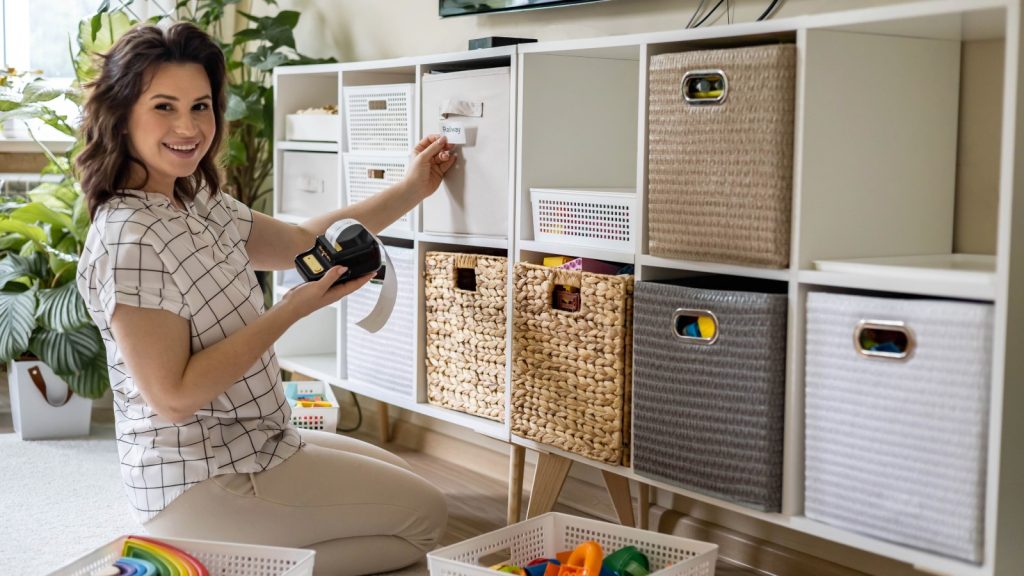
For items you’re unsure about, create a ‘maybe’ box. Store it out of sight for six months. If you haven’t needed anything from it in that time, donate the entire box without opening it. This technique helps you let go of items without the fear of immediate regret. Set a reminder in your calendar to review the box after six months to ensure you follow through.
Use Vertical Space
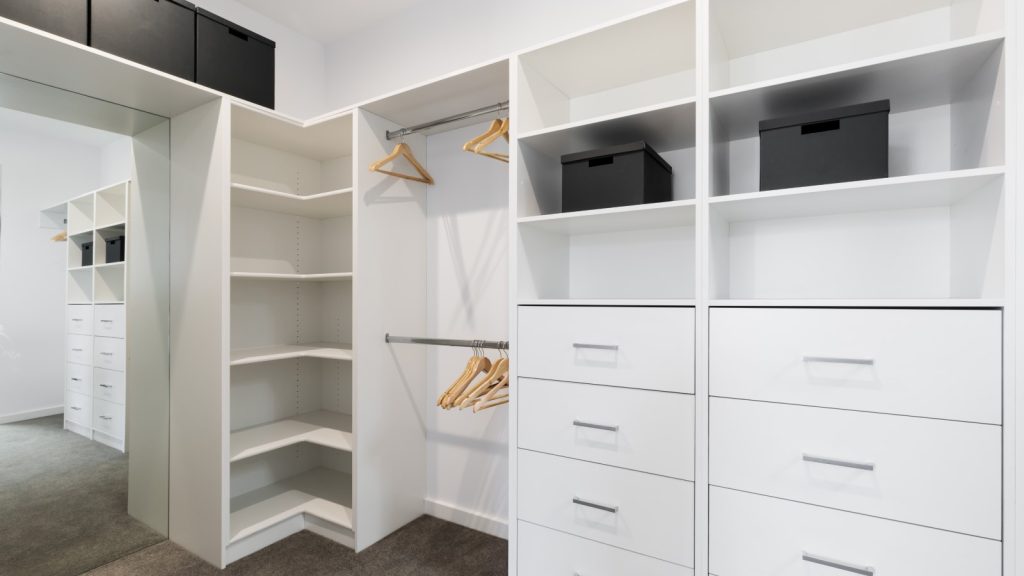
Make use of wall space with shelves, pegboards, or hanging organisers. This frees up floor space and keeps items easily accessible. Vertical storage is particularly useful in small rooms, bathrooms, and kitchens. Look for dead space behind doors or in narrow gaps between furniture. Consider using tension rods or command hooks for lightweight items to avoid damaging walls.
Declutter Your Wallet

Don’t forget about the clutter you carry with you. Sort through your wallet, removing old receipts, expired cards, and unnecessary items. A streamlined wallet is easier to use and reduces daily stress. Keep only essential cards and a small amount of cash. Consider using a digital wallet app for loyalty cards to further reduce physical clutter.
Use the ‘Outbox’ Method
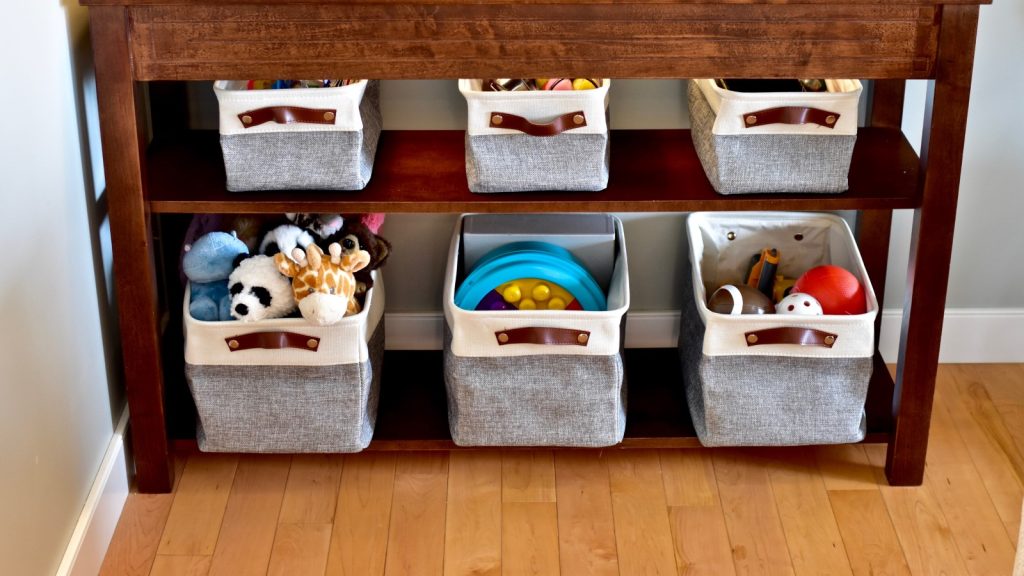
Place a box in each room for items that don’t belong there. As you go about your day, toss misplaced items into these boxes. Once a week, return the items to their proper homes. This method helps maintain order without interrupting your daily routine. Make it a family activity to empty the outboxes together, teaching children about organisation in the process.
Try the Closet Hanger Experiment
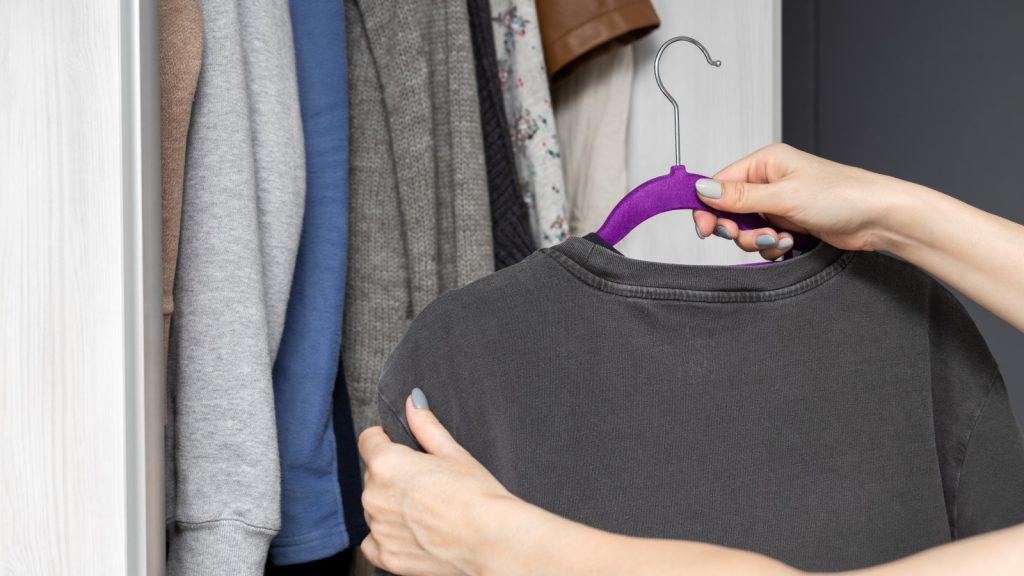
Hang all your clothes with the hangers facing the same direction. After you wear an item, return it with the hanger facing the opposite way. After six months, you’ll see which clothes you actually wear. Donate or sell the untouched items. This experiment makes it easy to visualise your wardrobe habits. Take photos of your wardrobe at the start and end of the experiment to see the difference.
Use the ‘Touch It Once’ Rule

When you pick up an item, deal with it immediately. Either put it away, throw it out, or take necessary action. This rule prevents items from being moved from pile to pile without actually being dealt with. It’s particularly useful for mail, laundry, and dishes. Teach this rule to family members to maintain a clutter-free home collectively.
Declutter Your Car

Don’t forget about your vehicle when decluttering. Remove unnecessary items, organise your glove compartment, and create a system for essential car items. A tidy car makes daily commutes less stressful and ensures you always have what you need on the go. Keep a small bin or bag in your car for trash and empty it weekly.
Use the ‘One Minute’ Rule
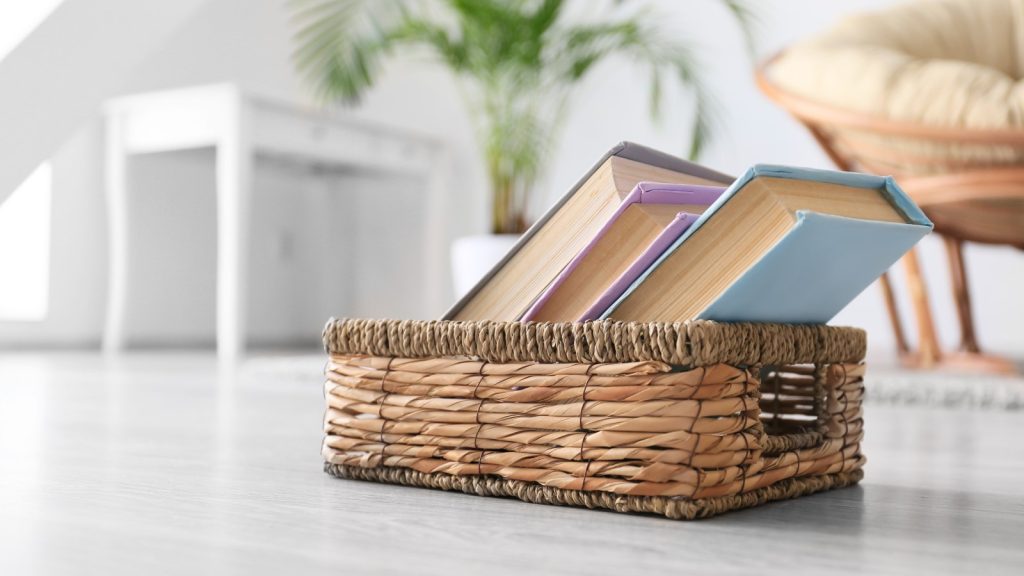
If a task takes less than one minute to complete, do it immediately. This could be hanging up a coat, filing a document, or putting away a book. These small actions prevent clutter from accumulating in the first place. Make this a habit and watch how it transforms your space over time. Challenge family members to join in and make it a game to see who can complete the most one-minute tasks in a day.
Create a Donation Schedule

Set regular dates for donating items, such as every three months. This creates a deadline for decluttering and ensures that items actually leave your home. Mark these dates on your calendar and stick to them. Consider tying your donation schedule to specific charities or causes you support. Research local charities’ needs beforehand to ensure your donations are most helpful.
Use Space-Saving Hangers
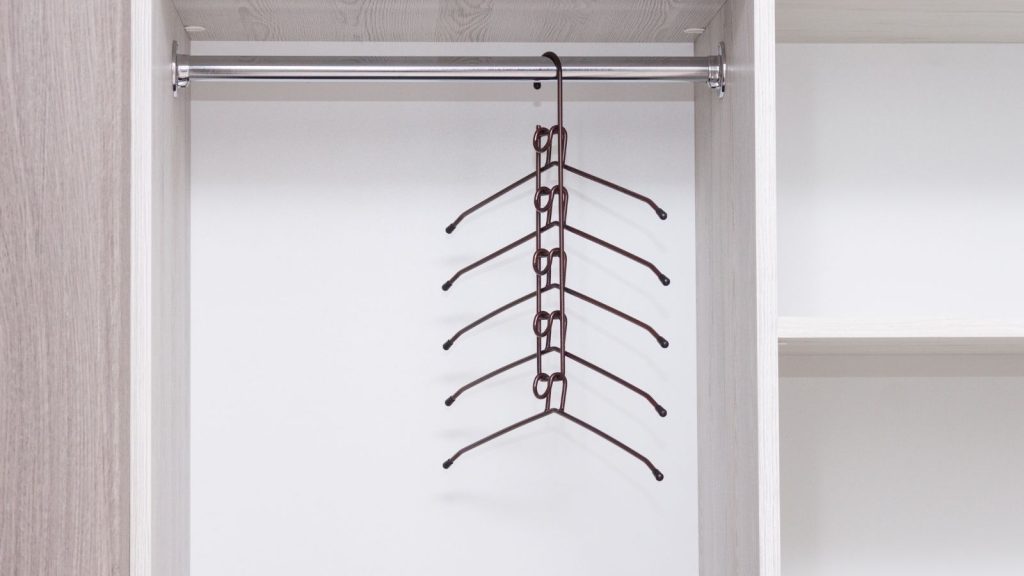
Invest in slim, velvet hangers or cascading hooks to maximise wardrobe space. These hangers allow you to fit more clothes in less space and prevent items from slipping off. They also give your wardrobe a uniform, tidy appearance. Use different coloured hangers for different categories of clothing to make outfit selection even easier.
Declutter Your Makeup Collection

Sort through your makeup and toiletries. Throw out anything that’s expired or that you no longer use. Group similar items together and store them in clear containers. This makes your morning routine easier and ensures you use products before they expire. Create a ‘daily essentials’ box for items you use every day to streamline your routine further.
Use the ‘Reverse Hanger’ Technique
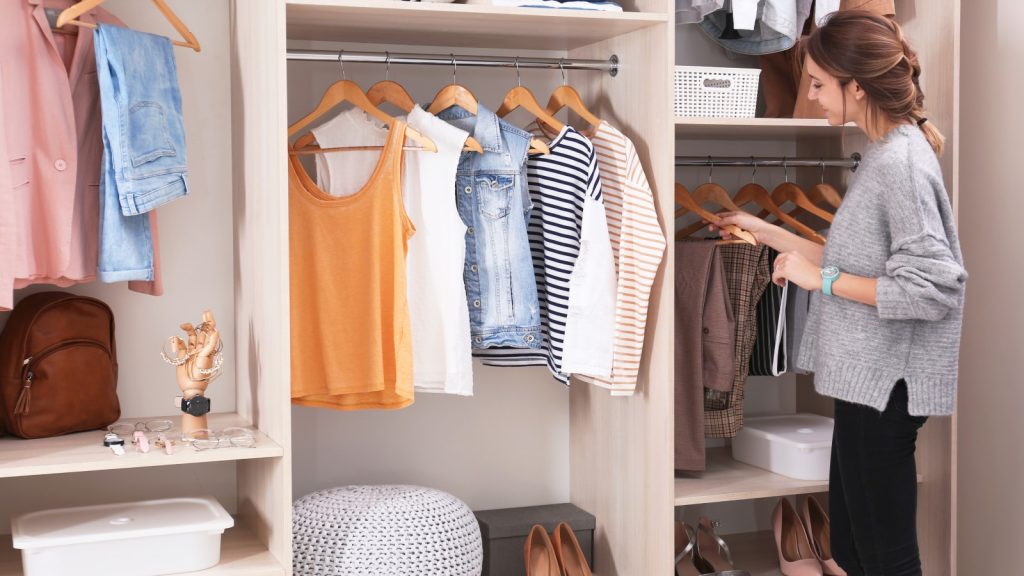
At the start of the season, turn all your hangers backwards. As you wear items, return them to the wardrobe with the hanger facing the correct way. At the end of the season, you’ll clearly see which clothes you didn’t wear. Consider donating these unused items. Take photos of outfits you love to create a ‘lookbook’ and inspire future outfit choices.
Create a ‘Pending’ Box

For items you’re not ready to part with but don’t currently need, create a ‘pending’ box. Store it out of sight and set a reminder to review it in six months. If you haven’t needed the items by then, it’s time to let them go. This technique helps ease the anxiety of decluttering sentimental or potentially useful items. Keep a list of the box’s contents on the outside to avoid unnecessary unpacking when looking for specific items.
Use Door Organisers

Utilise the back of doors with over-the-door organisers. These are great for shoes, accessories, cleaning supplies, or pantry items. They make use of often-overlooked space and keep items easily accessible. Look for organisers with clear pockets for easy identification of contents. Label each pocket to maintain organisation and make it easy for family members to help keep things tidy.
Try the ’12-12-12′ Challenge
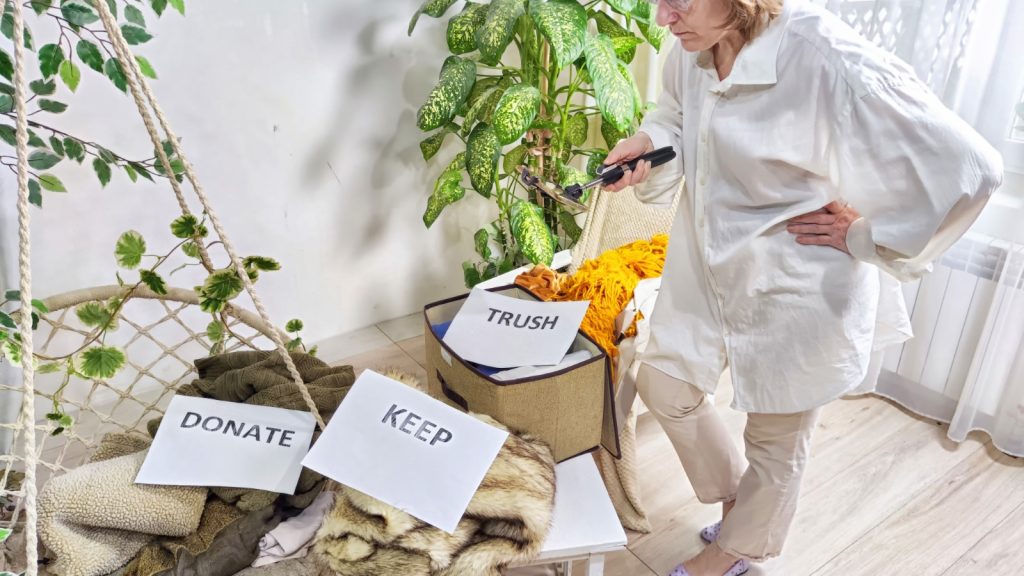
Find 12 items to throw away, 12 to donate, and 12 to be returned to their proper home. This balanced approach helps you make quick decisions and see immediate results. It’s a great way to kickstart your decluttering when you’re feeling overwhelmed. Make it a weekly challenge and see how much you can declutter over time.
Use Drawer Dividers
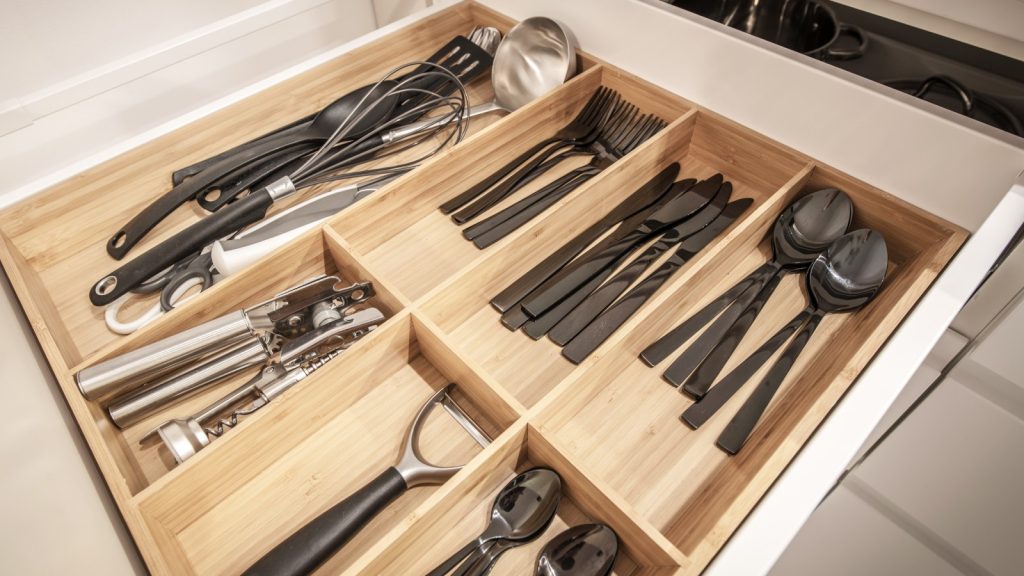
Keep drawers organised with dividers or small boxes. This prevents items from rolling around and getting mixed up. It’s particularly useful for underwear, socks, and small accessories. You can buy drawer organisers or make your own using cardboard boxes. Measure your drawers before purchasing or making dividers to ensure a perfect fit.
Declutter Your Phone

Don’t forget about digital clutter on your phone. Delete unused apps, clear out old photos and messages, and organise your home screen. A tidy phone reduces daily stress and makes your device more efficient. Set aside time each month for a digital declutter. Use cloud storage for photos and documents to free up space on your device without losing important memories.
Use the ‘One In, One Out’ Rule

For every new item you bring into your home, remove one similar item. This maintains the balance in your space and prevents clutter from building up again. It’s particularly effective for clothing, books, and kitchen gadgets. Consider donating the item you’re replacing to keep the cycle of giving going. Keep a donation bag in your closet to make this process easier.
Create a ‘Lost and Found’ Box

Designate a box for items that seem to have no home. Review this box monthly. Find homes for keeper items and donate or discard the rest. This prevents random items from cluttering up surfaces around your home. Place the box in a central location that’s easy for all family members to access. Set a recurring reminder to sort through the box to prevent it from becoming a clutter magnet itself.
Use the ‘Two-Minute’ Rule
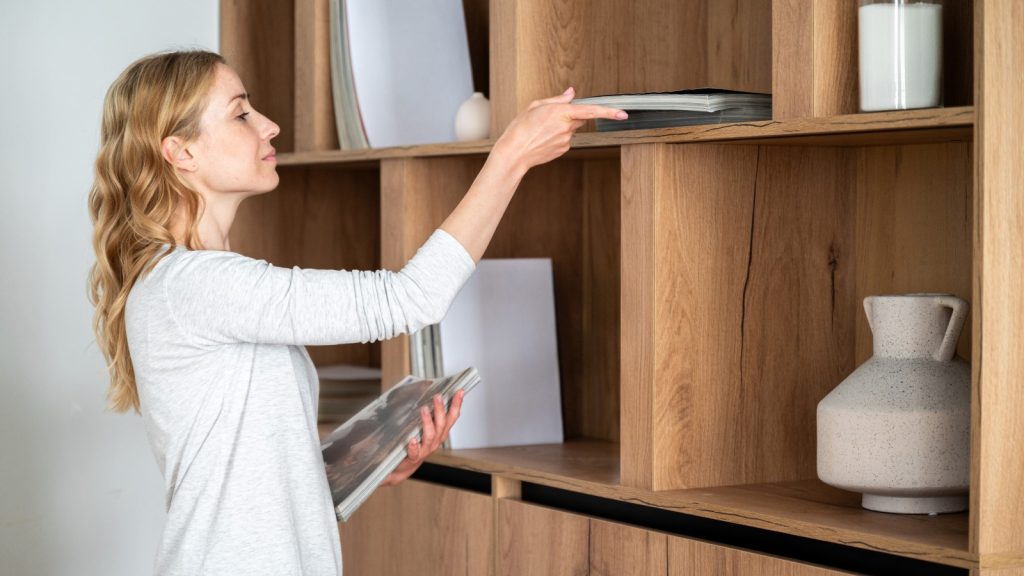
If a task will take less than two minutes to complete, do it immediately. This could be putting away a book, hanging up a coat, or filing a document. These small actions prevent clutter from accumulating and make larger decluttering sessions easier. Make this a habit and watch how it transforms your space over time. Encourage family members to adopt this rule to maintain a tidy home collectively.
Katy Willis is a writer, master herbalist, master gardener, and certified canine nutritionist who has been writing since 2002. She’s finds joy in learning new and interesting things, and finds history, science, and nature endlessly fascinating.

